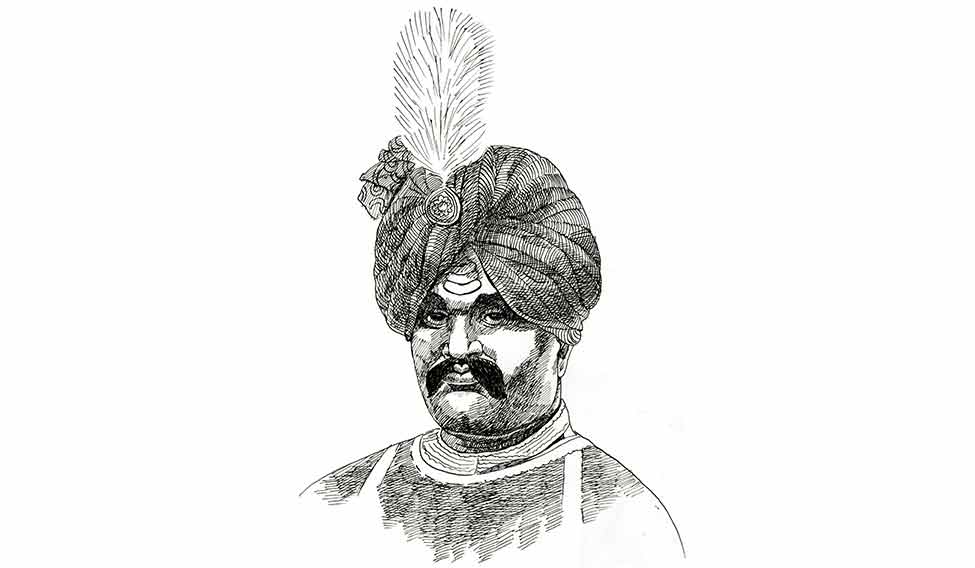
Classical ages in history have often been fashioned by powerful and visionary rulers who, through their political insights and military prowess, established prosperous and stable regimes that bred conducive conditions for nurturing innovations and setting standards of excellence. Rajendra Chola was one such heroic ruler of extraordinary far-sightedness and determination, whose empire-building fostered the spectacular classical age of southern India during the 11th century. This period produced unparalleled creativity in the arts, and also heralded the cultural ascendancy of Tamilakam, the ancient Tamil country, which the Chola kings adulated as their homeland.
The Chola lineage, of which Rajendra was perhaps the most illustrious of sons, is one the longest-lived imperial lineages of south Asia. Chola kings are mentioned in the Ashokan inscriptions (3rd century BCE), and Sangam literature mentions them as rulers of Uraiyur (Tiruchirapalli taluka). However, it is difficult to trace the genealogical ties of the imperial dynasty that came into being during the 9th century through the capture of Thanjavur, in 850 CE, by the Chola, Vijayalaya. The Imperial Cholas ruled for 400 years, until c. 1260 CE, and Rajendra, the fourth known ruler after Vijayalaya, created a unique empire, which shaped the cultural histories of kingdoms in the distant shores of the Indian Ocean, far away from Cholamandalam, ‘the heartland of Chola rule’.
Before succeeding his illustrious father, Rajaraja I (985-1014 CE), to the throne, Rajendra had jointly ruled with him for two years and had participated in many of his campaigns.
Rajendra vastly expanded his inheritance, and ruled over a territory that remains the maximum extent of land occupied by a Chola monarch. He annexed the fertile and much coveted Chalukyan lands in the Raichur Doab, large areas in Sri Lanka, and in the Andaman and Nicobar islands, and then ambitiously attacked Mahipala, the ruler of Bengal and Odisha, to reach the Ganga and assert his ascendancy of the north. His army symbolically carried water from the river to consecrate the new, and aptly-named, capital, Gangaikonda Cholapuram (near Kumbakonam). The Thiruvalangadu copper plates celebrating his military achievements declared: “Mocking Bhagiratha who by the force of his austerities caused the descent of the Ganga, Rajendra, light of the solar race, set out to sanctify his own land with the waters of that stream brought by the strength of his arm.”
In his capital, Rajendra created an artificial lake, 16 miles long and representing the “liquid pillar of victory”, which received the Ganga water, and emulating his father, he, too, commissioned a spectacularly monumental temple, the Rajendra-colisvaram, for enshrining the divinity of Shiva, and his own kingship. An image of the dancing Shiva in this temple is the finest stone representation of the theme.
Significantly novel in strategy and design was Rajendra’s mercantile and military campaign, with army and navy, against the kings of Srivijaya (Malaya, Sumatra and Java), who had begun to increasingly interfere in the India-China trade. Rajendra’s unqualified success secured the financial interests of the Indian merchants operating from Srivijaya, and the strategic towns along the Strait of Malacca, which he brought under his control, secured his and his subjects’ investments in the lucrative trade.
The military successes nurtured new nagarams (towns), and the opulent guilds, comprising also wealthy landowners, lavishly patronised the arts. The graceful bronzes of Shiva and his pantheon, and the painted murals in the numerous temples of Rajendra’s reign epitomise perfection and the high technical standards that were reached. The king seemingly inspired the bronzes of the temples at Polonnaruwa, which spoke of the displacement of Buddhism by the Hindu religion within Sri Lanka. Following defeat, the Khmer kings of Srivijaya also patronised the worship of Shiva and Vishnu throughout the 11th century, and the new cultural transactions between peninsula India and the southeast, which Rajendra facilitated, were unequalled during his lifetime. Therefore, the title of Chakravartigal, which Rajendra subsequently assumed, continues to appear befitting the peerless emperor.
Sudeshna Guha is Tagore Research Scholar, National Museum, New Delhi.





